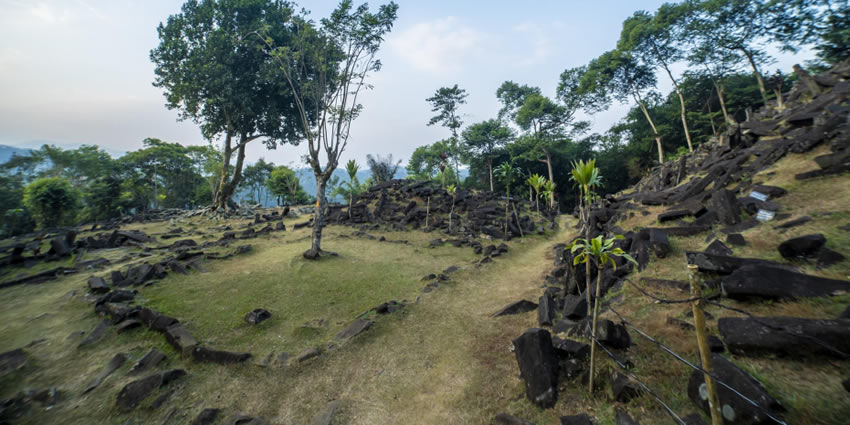Gunung Padang in Indonesia is the oldest known pyramid

Gunung Padang in West Java Province (Indonesia) is an extinct volcano 885 meters high, notable for the megalithic archaeological site at its summit. Situated on five terraces protected by retaining walls, the site is considered sacred to the Sundanese, an indigenous population. It is accessed via 370 stone steps.
The first archaeologists who worked on the site in the late 19th and early 20th centuries described it as an “ancient mound-top cemetery”, known in local parlance as the “mountain of enlightenment” and declared it a cultural heritage site in 1998. But in reality, it was much more.
The new study has identified “several construction phases dating back to thousands of years BC, with the initial phase going back to the Paleolithic,” experts from the Bandung Institute of Technology and the University of Indonesia explain in the paper. published in the journal “Archaeological Exploration”.
A team of archaeologists, geophysicists, geologists, and paleontologists have devoted years of research to finding evidence that this site is in fact the oldest known pyramid in the world, much more archaic than the pyramids in Egypt or Central America.
The tropical climate of this region of West Java, characterized by periods of heavy rainfall, the growth of dense vegetation, and sedimentation, has resulted in ancient historical and cultural sites being buried over the centuries.
Therefore, experts studied the structure using seismic tomography, electrical tomography, and ground penetrating radar. They also drilled into the mound and collected core samples, allowing them to use radiocarbon dating techniques to find out the age of the layers that make up the mound.
After analyzing all the collected data, the researchers came to the conclusion that Gunung Padang was made mainly by human hands. They also found evidence that the structure was built in stages, thousands of years apart. They found that the oldest parts were built between 25,000 and 14,000 years ago, making this the oldest known pyramid.
Experts found evidence of several remodelings that over time formed a coherent structure. The first consisted of sculpted lava, where builders carved figures on top of a small extinct volcano and likely surrounded them with underground chambers and cavities.
Then, several thousand years later, sometime between 7900 and 6100 BC, another group added a layer of bricks and stone columns. After some time, another community added a layer of soil to the hill, covering up some of the previous work. Then, sometime between 2000 and 1100 BC, more topsoil, rock terraces, and other elements were added.
The team also discovered details that suggest there may be hollow parts inside the structure, indicating possible hidden cameras. That’s why they suggest going deep into them and then lowering the camera to see what might be in those parts of the mountain.